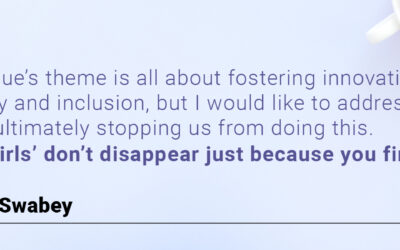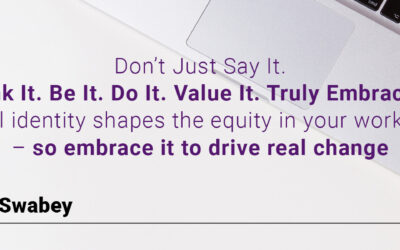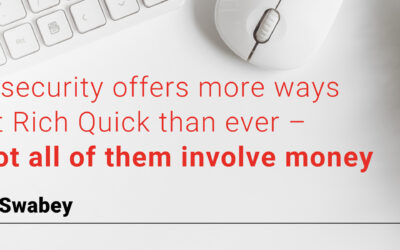The reality of unconscious bias and what we can do about it
I have always wanted to work for a cause that would bring real change to supporting and providing women in security a voice in the industry, and launching Women in Security Magazine in March was a big step towards just that.
I was ecstatic to see the strong welcome that the first issue got, with many applauding the way we were empowering women with stories of people creating real change. Many welcomed our efforts to inspire and empower women and young girls and to help break down the industry’s stereotypes and smash its glass ceilings.
After the launch, some questioned the decision to make the front cover pink and if it was due to our predominately female audience. That’s what really got me thinking.
The choice was made unintentionally and based purely on aesthetics – yet when questions were asked, I began questioning whether it did indeed reflect an unconscious bias on my part.
Worse still: if I had missed this, then what else have I missed? And if I can stumble into a trap like this despite being a passionate advocate for breaking stereotypes, then how many other people suffer from similar bias without even realising it?
Whether intentional or unintentional, unconscious bias is still common in our world – and everyone has some degree of it. This can be as simple as choosing to work with someone familiar or hiring someone you like – which might seem harmless until you consider that it can hinder opportunities available for others competing only on their merits.
Unconscious bias also causes the association of genders with certain personality traits, colours, imagery, behaviour, societal expectations, and so on – defying our best efforts to be ‘open-minded’. For example, many people still associate men with being assertive or a better leader, while women are deemed emotional, sophisticated and caring.
Within masculine domains, people often judge female targets and work products as less competent than identically described male targets and work products. Women need to display agency to overcome their perceived ‘lack of fit’ with leadership roles, and if they fail to do so their competency is rated low.
Women are also likely to experience prejudice in the workplace, the McKinsey & Company and LeanIn. Org report revealed, the problem of affinity bias persists as preconceived notions of people lead them to hire and promote people similar to them.
It’s little wonder that the proportion of women in the corporate sector declines dramatically from 47% in entry-level positions to 21% in the C-Suite level. The numbers become astonishingly low for women of colour, whereby 18% are in entry-level positions and only 3% are in the C-Suite level.
If implicit biases are leading us to wrong conclusions, over and over again, it becomes crucial to ask ourselves: how can we slow down, recognise our biases, and improve them?
We can start by looking at things like the language we use: using language full of male connotations shows implicit bias, and is one of the biggest reasons for the presence of this huge gender gap in the industry. So, too, are media stereotypes, such as male hackers in a hoodie or male scientists with glasses.
Over time, even the smallest societal signals reinforce intrinsic bias – which is why we must work to break down typical societal expectations of what specific genders need to do from an early age. This can be as simple as ensuring that teachers use gender-neutral language, give both genders an equal opportunity to participate in class, and avoid favouring one gender over another.
You can also apply the same dynamics in workplace environments, where we need to build and reinforce structures that break down these norms and reduce implicit biases. Think about how your company operates: does it employ unbiased hiring techniques, use gender-neutral language in job descriptions, provide equal opportunities to employees, ensure the firm has adequate work-life balance, and promote proper representation and championing of women in the field?
Bias emerges in many ways, and it perpetuates itself unless we commit ourselves to change. And that change is not the sole job of women; it’s a responsibility that everyone carries.
So: take some time to look within, and commit to action as well. After all, if you understand your own unconscious bias, you’ve taken the first step to reducing it.



